#30: Introduce the Setting through Description
When I was in grad school, I studied Rhetoric and Composition (the teaching of writing). In a class I took which incorporated classical rhetoric, I wrote an essay about the Latin term descriptio, or what today we would call description. According to the website Silva Rhetoricae, description is “a composition bringing the subject clearly before the eyes.” In other words, it helps us visualize something on the page.
The Greeks and the Romans considered descriptio (description) to be the opposite of narratio (narrative).
Description≠Narrative
Narrative is about forward movement, it’s about story and progression, it’s about events happening. But anytime you have description, it halts the forward movement: we are now looking at something being painted before our eyes. And that painting takes time.
This is not to say that all description should be avoiding, but it is essential to realize as a writer that description competes with narrative.
Jane Austen, as always, is an excellent role model on how to use description, particularly in how she describes her settings. She gives enough detail to give us a sense and feel of the whole without disrupting the forward movement of the narrative.
In a previous post, I talked about the importance of using setting to influence plot and character. In this post, we’re going to look at a few passages from Elizabeth’s physical journeys in Pride and Prejudice to see how Jane Austen uses description to establish setting. In the process, I’ll talk about five specific techniques that she uses to powerfully introduce setting through description.
Technique 1: Provide a few key details which give a sense of the whole.
One of Austen’s primary techniques in establishing setting is to only use a few pertinent details. Unlike a production designer in a film, who must physically choose, create, acquire, and place every single item which we see, a novelist is generally best served by focusing on a few points that give a taste, a feel, or a sense of the whole.
In Pride and Prejudice, Elizabeth’s first trip away from home is to visit her friend Charlotte Collins née Lucas. After Elizabeth turned downed Mr. Collins’ offer of marriage, her friend Charlotte accepted his hand, and now, at Charlotte’s behest, Elizabeth has come to visit the parsonage where they live.
In the following two passages from when Elizabeth arrives, note how we are given only a smattering of concrete descriptive details, yet from this we understand not just the setting, but the people who are part of it.
Passage 1 (emphasis added):
Elizabeth was prepared to see [Mr. Collins] in his glory; and she could not help fancying that in displaying the good proportion of the room, its aspect and its furniture, he addressed himself particularly to her, as if wishing to make her feel what she had lost in refusing him….After sitting long enough to admire every article of furniture in the room, from the sideboard to the fender…Mr. Collins invited them to take a stroll in the garden, which was large and well laid out, and to the cultivation of which he attended himself.
The sideboard and the fender stand in for all of the furniture, the rest of which we are meant to conjecture. For the garden we receive only two details: it is large and it is well laid out. More concrete particulars are not relevant.
Passage 2 (emphasis added):
Charlotte took her sister and friend [Elizabeth] over the house, extremely well pleased, probably, to have the opportunity of shewing it without her husband’s help. It was rather small, but well built and convenient; and everything was fitted up and arranged with a neatness and consistency of which Elizabeth gave Charlotte all the credit. When Mr. Collins could be forgotten, there was really a great air of comfort throughout, and by Charlotte’s evident enjoyment of it, Elizabeth supposed he must be often forgotten.
In this passage, Austen swiftly paints a picture of the house, giving not just concrete details, but also value judgments (neatness and consistency are a good thing, and reflect positively on Charlotte) and a more general, abstract sense of the feel (“a great air of comfort throughout”).
Technique 2: Use the description of the setting to reveal things about the characters and their states of mind.
On its most basic level, describing a setting is useful because it orients the reader—we feel grounded when we know where we are and what’s going on. Yet Austen never just uses setting description to orient us: she always makes it serve double-duty.
A good description reveals as much about characters and their states of mind as it reveals about the setting itself.
Mr. Collins’ parsonage abuts Rosings, the grand estate belong to his esteemed patroness, Lady Catherine de Bourgh.
They are invited to dinner, and they all walk together to approach Rosings. In the following description of setting, notice what is revealed about Elizabeth, and about Charlotte’s sister Maria and father Sir William:
Every park has it beauty and its prospects; and Elizabeth saw much to be pleased with, though she could not be in such raptures as Mr. Collins expected the scene to inspire, and was but slightly affected by his enumeration of the windows in front of the house, and his relation of what the glazing altogether had originally cost Sir Lewis De Bourgh.
When they ascended the steps to the hall, Maria’s alarm was every moment increasing, and even Sir William did not look perfectly calm.—Elizabeth’s courage did not fail her. She had heard nothing of Lady Catherine that spoke her awful from any extraordinary talents or miraculous virtue, and the mere stateliness of money and rank, she thought she could witness without trepidation.
It is clear that while Elizabeth sees the beauty and wealth of Rosings and its park, she does not let intimidate or overly influence her, unlike Mr. Collins (who expects raptures from them), Maria (who feels alarm as they go up what must be rather grand steps), and even Sir William (who should theoretically be the most comfortable with this level of wealth).
Technique 3: Couple the description of the setting with action within or in relation to the setting.
While description can at times slow or halt the plot, at times they can be paired together. Rather than completely describing a setting and then having action occur within it in, Jane Austen will provide details of the setting as an action occurs.
As Elizabeth encounters Rosings, they are moving, both physically and emotionally, to meet the great Lady Catherine; Mr. Collins is talking—describing the place (speech in itself is a type of action); and we are learning more about the setting and its inhabitants as we physically pass through it:
From the entrance hall, of which Mr. Collins pointed out, with a rapturous air, the fine proportion and finished ornaments, they followed the servants through an antechamber, to the room where Lady Catherine, her daughter, and Mrs. Jenkinson were sitting.
A few pages later, Austen uses the same technique, describing other objects in the space as they are used.
When the gentlemen had joined them, and tea was over, the card tables were placed. Lady Catherine, Sir William, and Mr. and Mrs. Collins sat down to quadrille; and as Miss De Bourgh chose to play at cassino, the two girls had the honour of assisting Mrs. Jenkinson to make up her party.
Technique 4: Use minimal description of the setting (or omit it entirely) when the setting is not necessary to the story.
It is the temptation of the writer to describe, in full detail, cool places, buildings, and objects, even when doing so is not absolutely necessary to the story. This is an indulgence which Austen tends to avoid. (Some writing styles like to linger on setting for setting’s sake, and doing so can also be effective, but even if you are writing in one of these styles, there is still a risk of over-indulging in description.)
Later in Pride and Prejudice, Elizabeth takes a trip with her aunt and uncle to Derbyshire, which happens to be where Mr. Darcy lives. Despite this being a sight-seeing trip for Elizabeth, full of interesting towns, landscapes, and historic sights which could easily be a full chapter, and could possibly reveal something about Elizabeth’s character or her relationship with her aunt and uncle, Austen does not provide any description of the setting, and her narrator even comments on the fact that she is not providing description:
It is not the object of this work to give a description of Derbyshire, nor of any of the remarkable places through which their route thither lay; Oxford, Blenheim, Warwick, Kenelworth, Birmingham, &c are sufficiently known. A small part of Derbyshire is all the present concern.
The small part of Derbyshire the narrator focuses on is Lambton, which Mrs. Gardiner has a personal connection to, and which happens to be near Mr. Darcy’s home, Pemberley.
Technique 5: Give more detailed setting descriptions when the setting can strengthen a key component of the narrative.
While at many points in a story description is unnecessary, or is useful only in small portions, at other times detailed description of a setting can add depth to a story, highlight a character’s deep emotions or internal transformation, and prepare the reader for what is to come.
In contrast to the minimal description of the parsonage and Rosings, and the complete lack of description of the rest of the “remarkable places” during the journey to Lambton, Austen provides pages of description about the grounds and interior of Pemberley. Here are the first few paragraphs:
Elizabeth, as they drove along, watched for the first appearance of Pemberley Woods with some perturbation; and when at length they turned in at the lodge, her spirits were in a high flutter.
The park was very large, and contained great variety of ground. They entered it in one of its lowest points, and drove for some time through a beautiful wood, stretching over a wide extent.
Elizabeth’s mind was too full for conversation, but she saw and admired every remarkable spot and point of view. They gradually ascended for half a mile, and then found themselves at the top of a considerable eminence, where the wood ceased, and the eye was instantly caught by Pemberley House, situated on the opposite side of a valley, into which the road with some abruptness wound. It was a large, handsome, stone building, standing well on rising ground, and backed by a ridge of high woody hills;—and in front, a stream of some natural importance was swelled into greater, but without any artificial appearance. Its banks were neither formal, nor falsely adorned. Elizabeth was delighted. She had never seen a place for which nature had done more, or where natural beauty had been so little counteracted by an awkward taste. They were all of them warm in their admiration; and at that moment she felt, that to be mistress of Pemberley might be something!
This level of description is more powerful for having been saved for this moment. Elizabeth’s level of engagement with the setting, as demonstrated by the copious description, shows her attentiveness not just to Pemberley but to its owner, Mr. Darcy. Elizabeth is not just noticing a setting: she is interacting and engaging with it, and it is as she does so that she has the first conscious realization that maybe she should have accepted Mr. Darcy’s proposal.
Exercise 1: Choose one of your favorite authors and examine how they use description to establish setting. What techniques do they use? Are they the same as those used by Jane or are they different? What is the effect of the setting description on the story?
Exercise 2: Write a short scene involving three people walking through a graveyard. Include details about the setting, but do so in a way that reveals things about all three characters and their states of mind.
Exercise 3: Take a story that you have drafted and find places that include (or could include) setting description. Find the following in your manuscript:
- A passage where you could reduce or eliminate description.
- A passage where you could use different details that might give a better overall sense of the setting.
- A passage where setting could be revealed through action.
- A place where the description of the setting could reveal more about the characters and their state of mind.
- A key scene in which more description of the setting could be added to increase the impact of the scene.
Now consider if any of these changes would both match your vision and improve your story; if so, revise!

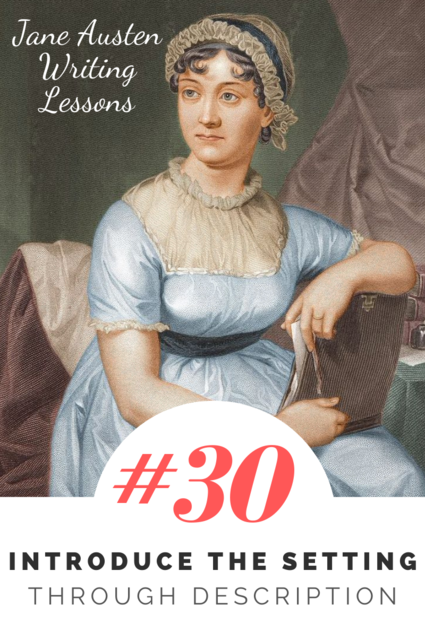
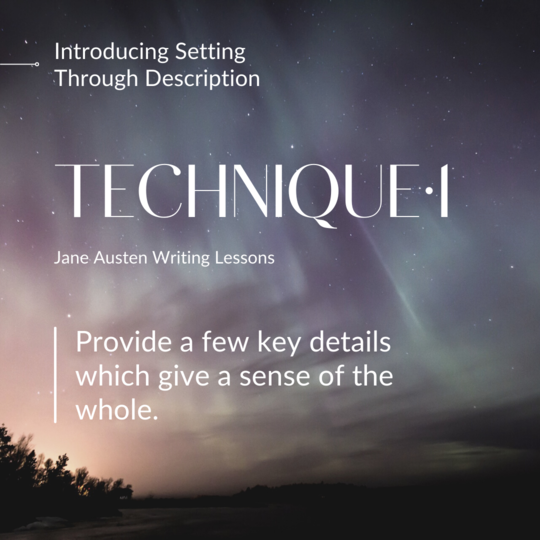
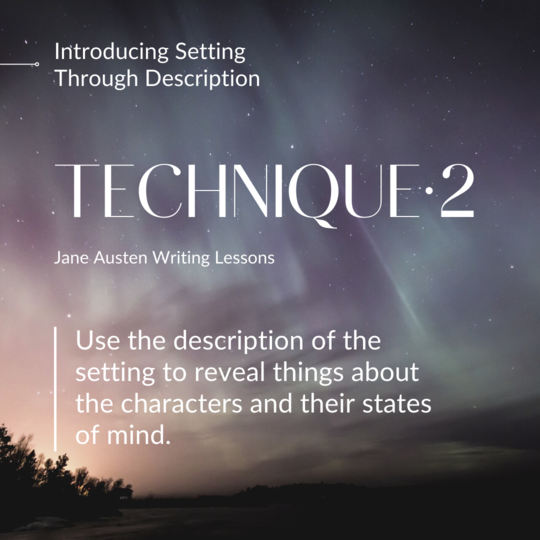
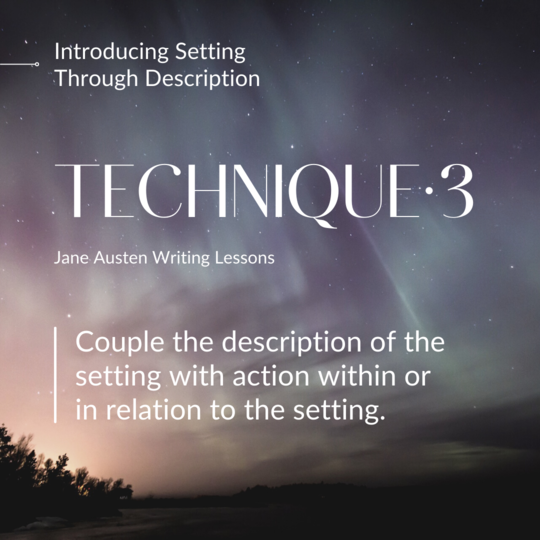
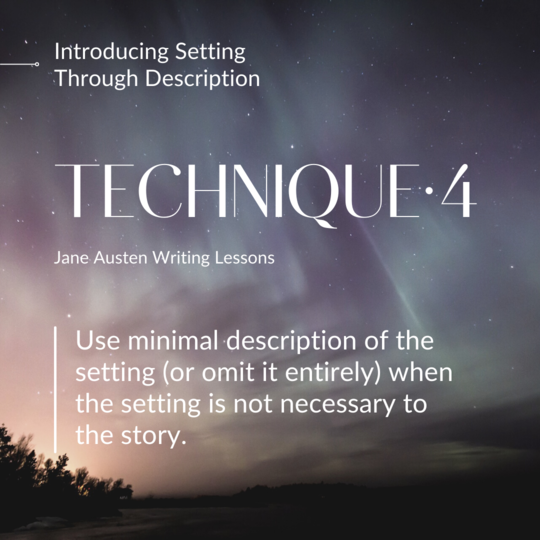
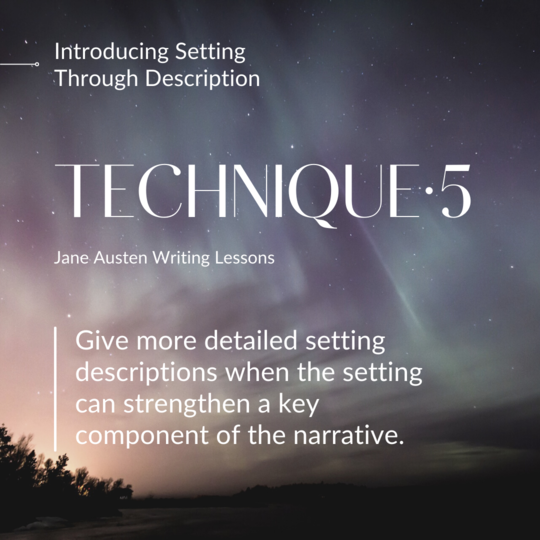

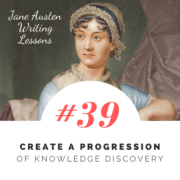
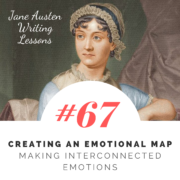
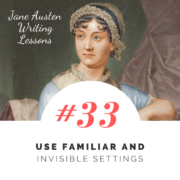
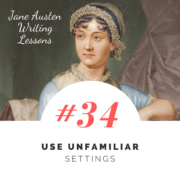
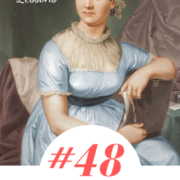
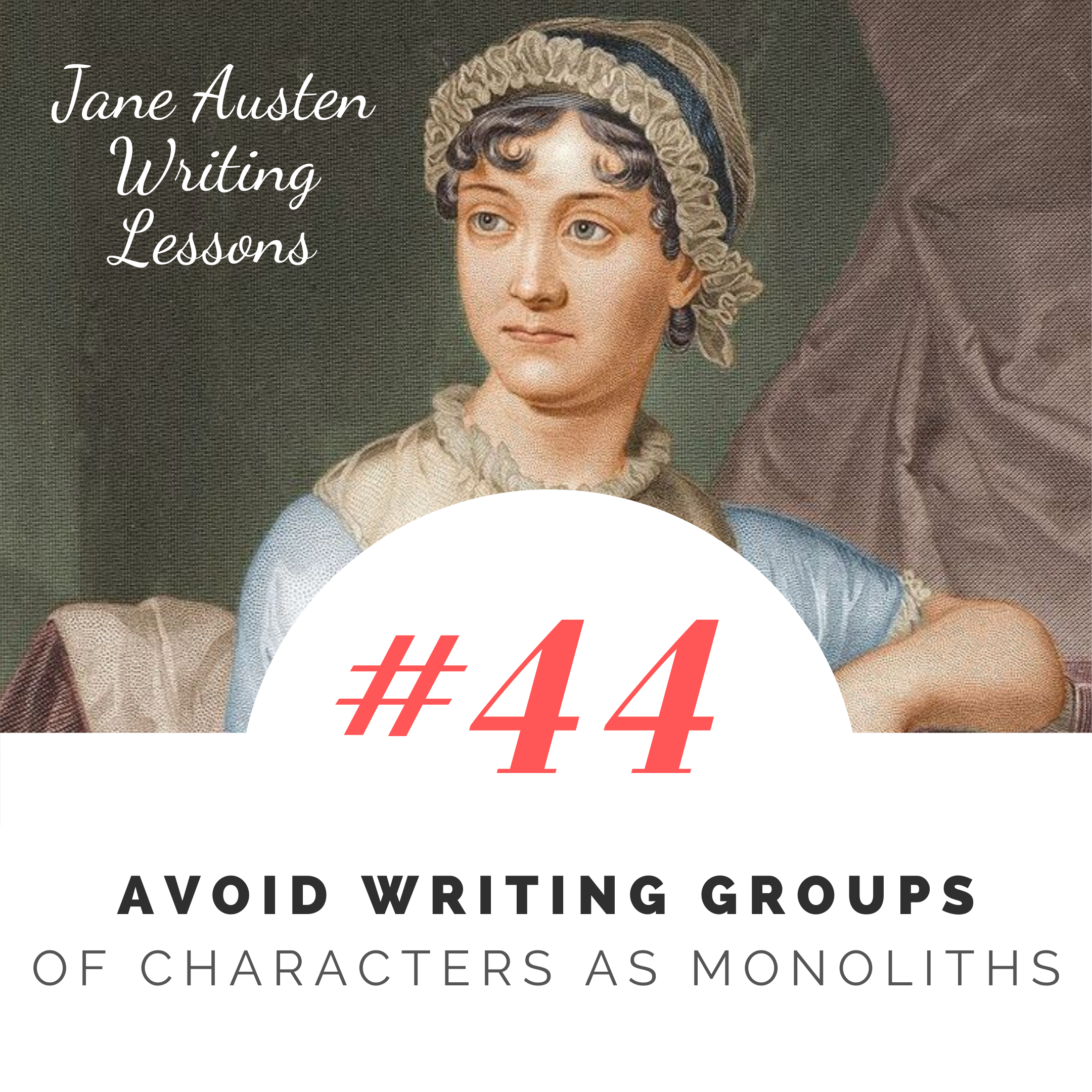


Leave a Reply
Want to join the discussion?Feel free to contribute!